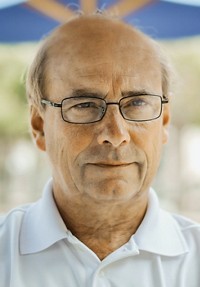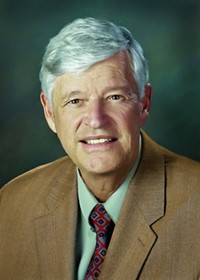Advertisement
Grab your lab coat. Let's get started
Welcome!
Welcome!
Create an account below to get 6 C&EN articles per month, receive newsletters and more - all free.
It seems this is your first time logging in online. Please enter the following information to continue.
As an ACS member you automatically get access to this site. All we need is few more details to create your reading experience.
Not you? Sign in with a different account.
Not you? Sign in with a different account.
ERROR 1
ERROR 1
ERROR 2
ERROR 2
ERROR 2
ERROR 2
ERROR 2
Password and Confirm password must match.
If you have an ACS member number, please enter it here so we can link this account to your membership. (optional)
ERROR 2
ACS values your privacy. By submitting your information, you are gaining access to C&EN and subscribing to our weekly newsletter. We use the information you provide to make your reading experience better, and we will never sell your data to third party members.
People
ACS Inorganic Division Adds U.S. Touch To Dalton Discussions
by Elizabeth K. Wilson
July 28, 2008
| A version of this story appeared in
Volume 86, Issue 30

The Royal Society of Chemistry's traditionally Europe-based inorganic chemistry meeting, Dalton Discussions, had a nontraditional U.S. locale this year. It also featured some extra U.S. flavor with help from the American Chemical Society Division of Inorganic Chemistry, which funded the meeting's poster presentations.
Texas A&M University chemistry professor François P. Gabbaï organized the session of some 60 posters. His tasks included obtaining travel grants for students and prize money for a contest.
Fabian Dielmann, a graduate student in the lab of Manfred Scheer at the University of Regensburg, Germany, won a contest for best poster by a grad student or postdoctoral fellow for his presentation on the synthesis of phosphorus ligand complexes with extended phosphorus frameworks. The poster also showed how Scheer used the phosphorus ligand complexes as building blocks in supramolecular coordination compounds.
Other poster winners included Joshua Bates of the University of British Columbia; Vivienne Blackstone of the University of Bristol, in England; Stefan Minasian of the University of California, Berkeley; and Michael Huber of the University of Karlsruhe, in Germany.
Because it's often difficult to decide which posters to visit during a session, Gabbaï also experimented with a new format, which he had seen previously at Gordon Research Conferences. Conference attendees gathered while 15 to 20 poster presenters each gave a one-minute summary of their work, using only one PowerPoint slide.
"This was a way to give teasers for a lot of posters," says John Arnold, a chemistry professor at UC Berkeley and one of the meeting's organizers.
"It was pretty effective," says Frances H. Stephens, a Los Alamos National Laboratory chemist who gave one of the "flash" presentations. Stephens' poster on the development of liquid amine boranes for hydrogen storage won the Best Young Investigator Award. She says the strategy was useful for her own poster-visiting planning. "Being a busy person, I have only so much time to read the abstract book," she says.
Besides, mastering the sound bite can be an important skill for young scientists, Stephens says. "Presenting one's research in a condensed way is probably a really good learning experience."
- Dalton Crosses The Pond
- European inorganic chemistry meeting comes to Berkeley to showcase main-group chemistry
- ACS Inorganic Division Adds U.S. Touch To Dalton Discussions
- The Royal Society of Chemistry's traditionally Europe-based inorganic chemistry meeting, Dalton Discussions, had a nontraditional U.S. locale this year




Join the conversation
Contact the reporter
Submit a Letter to the Editor for publication
Engage with us on Twitter